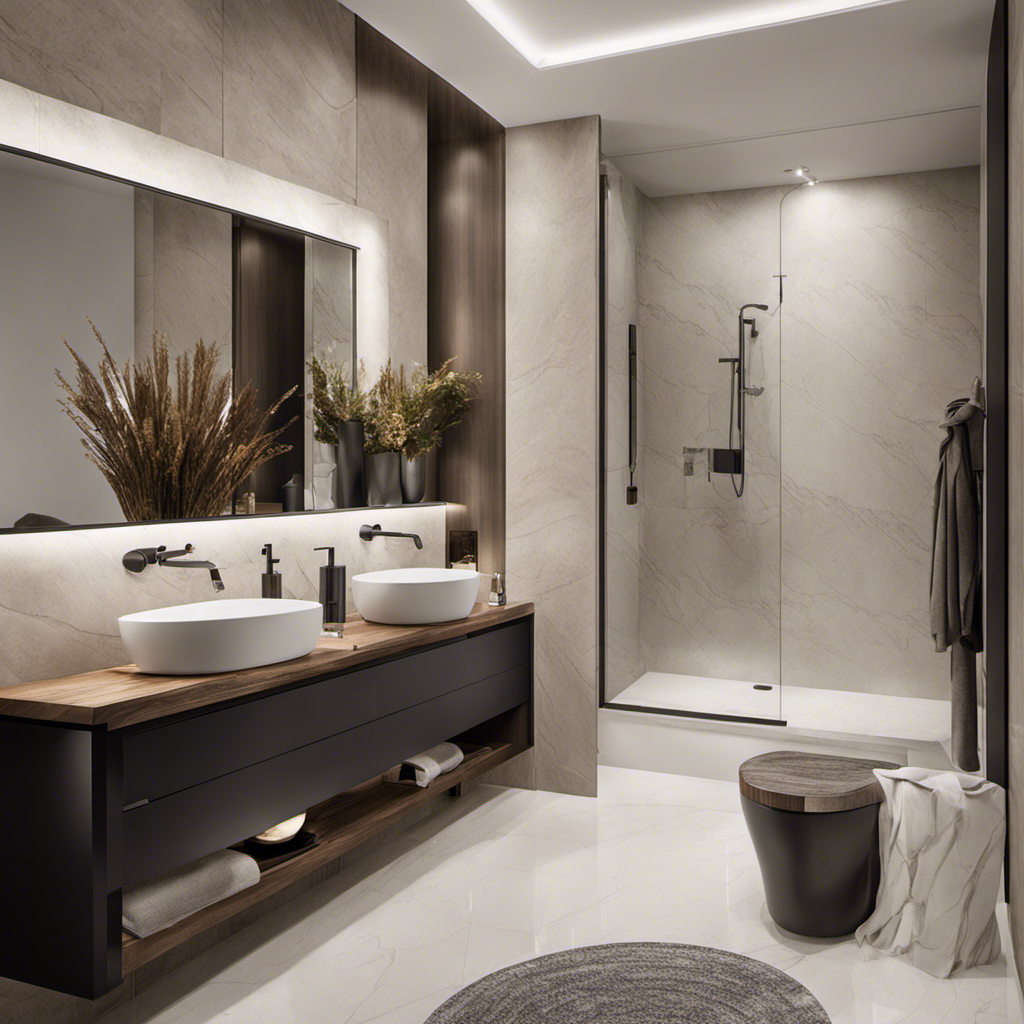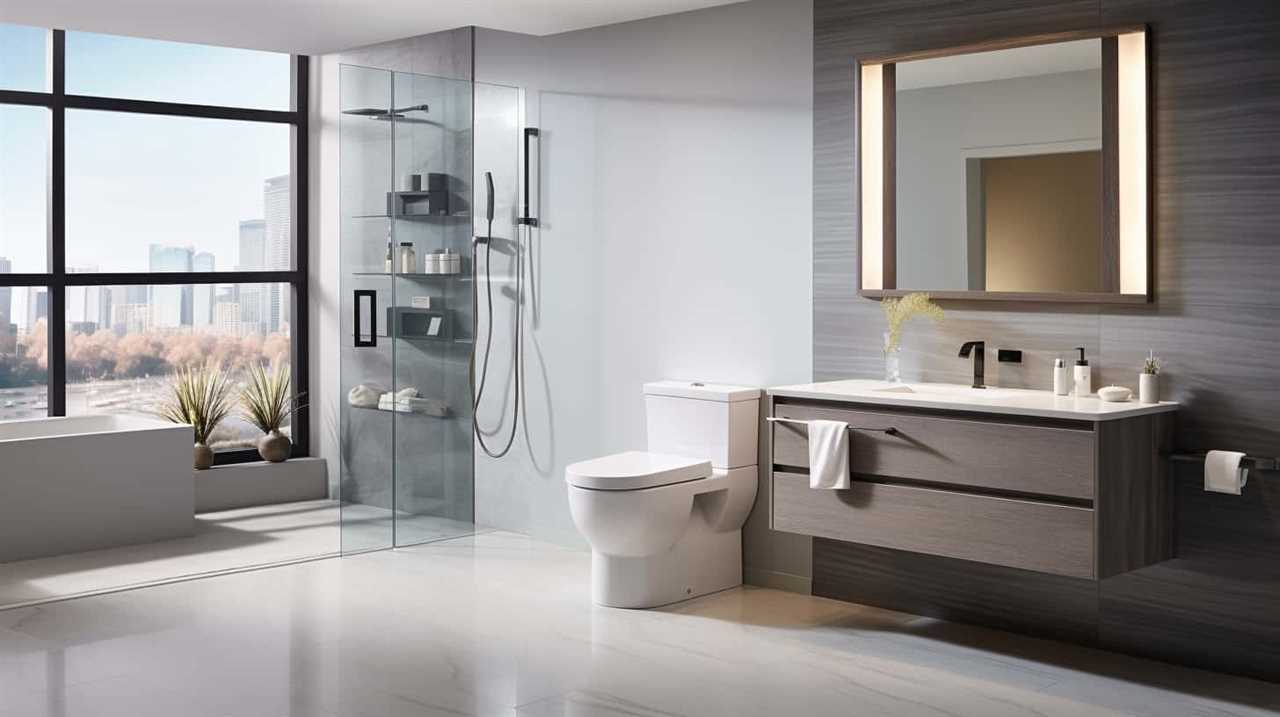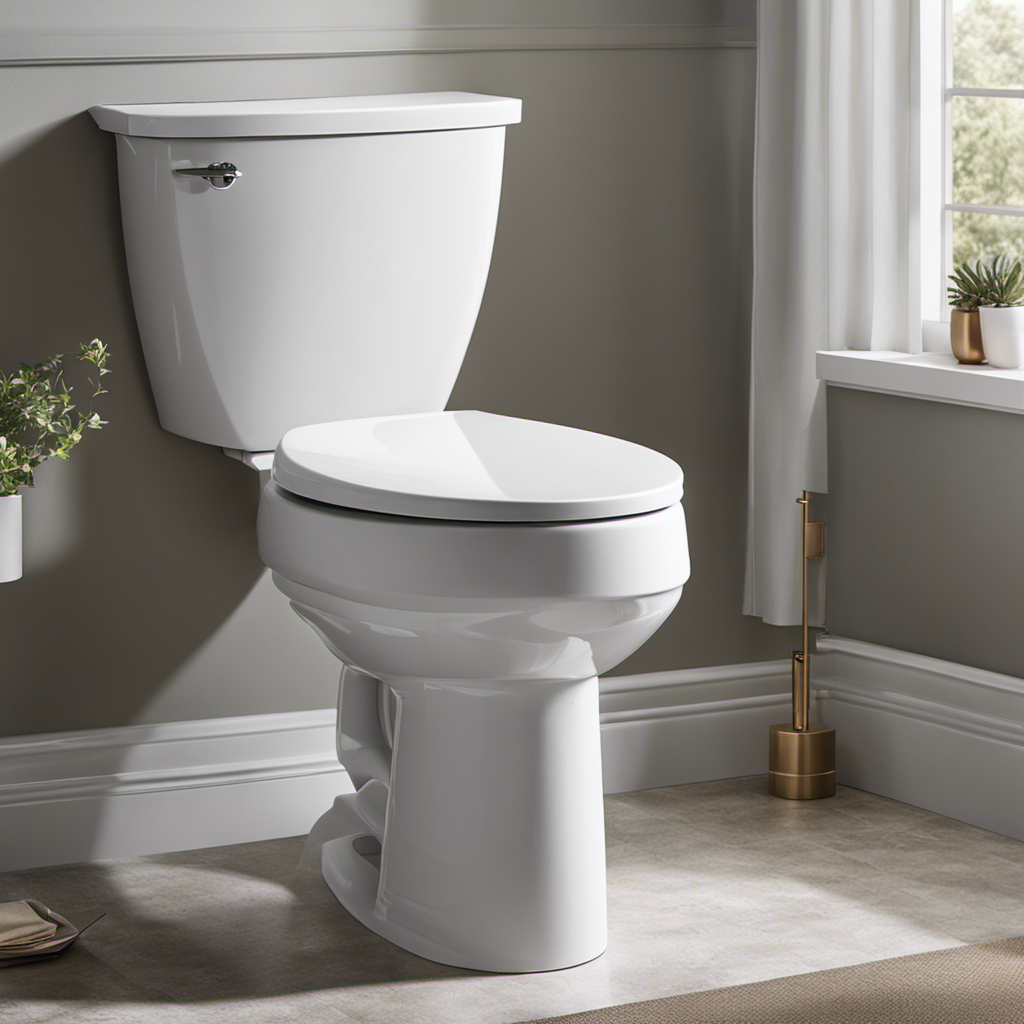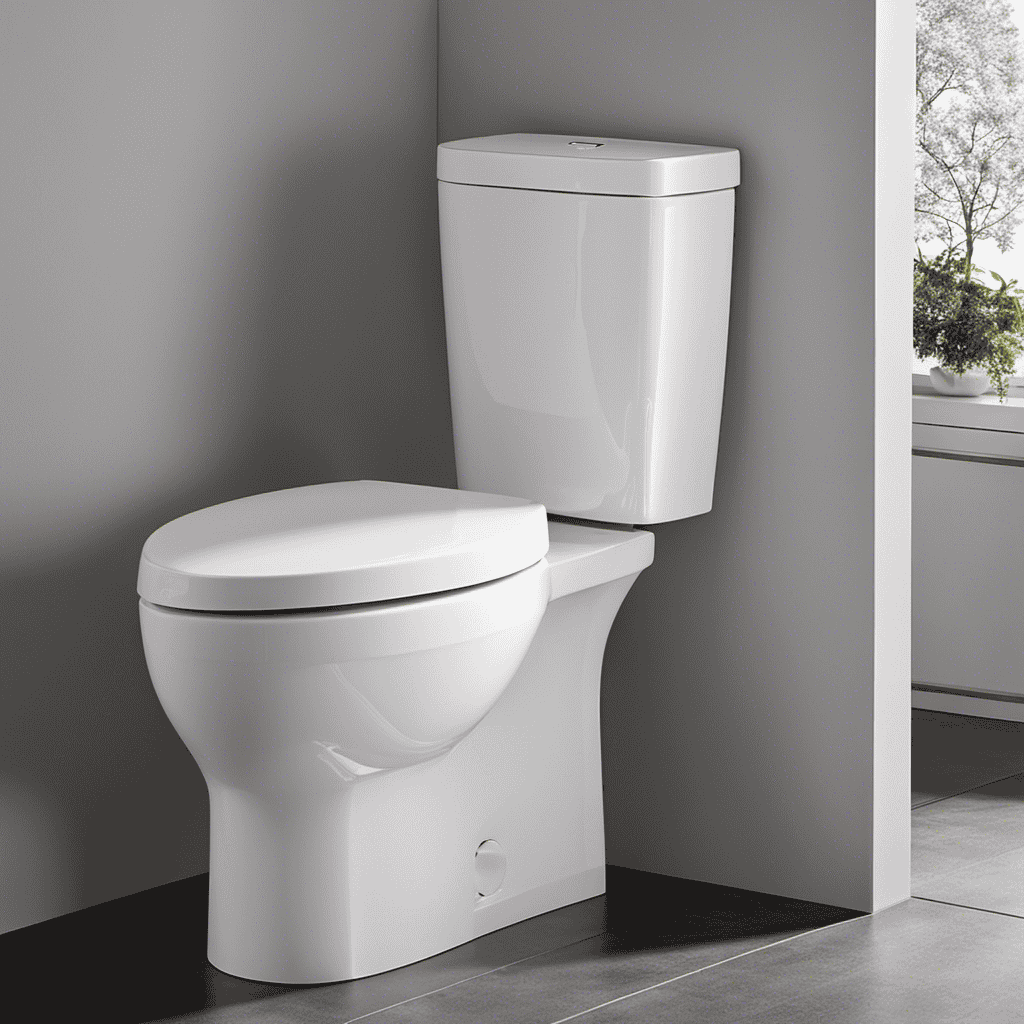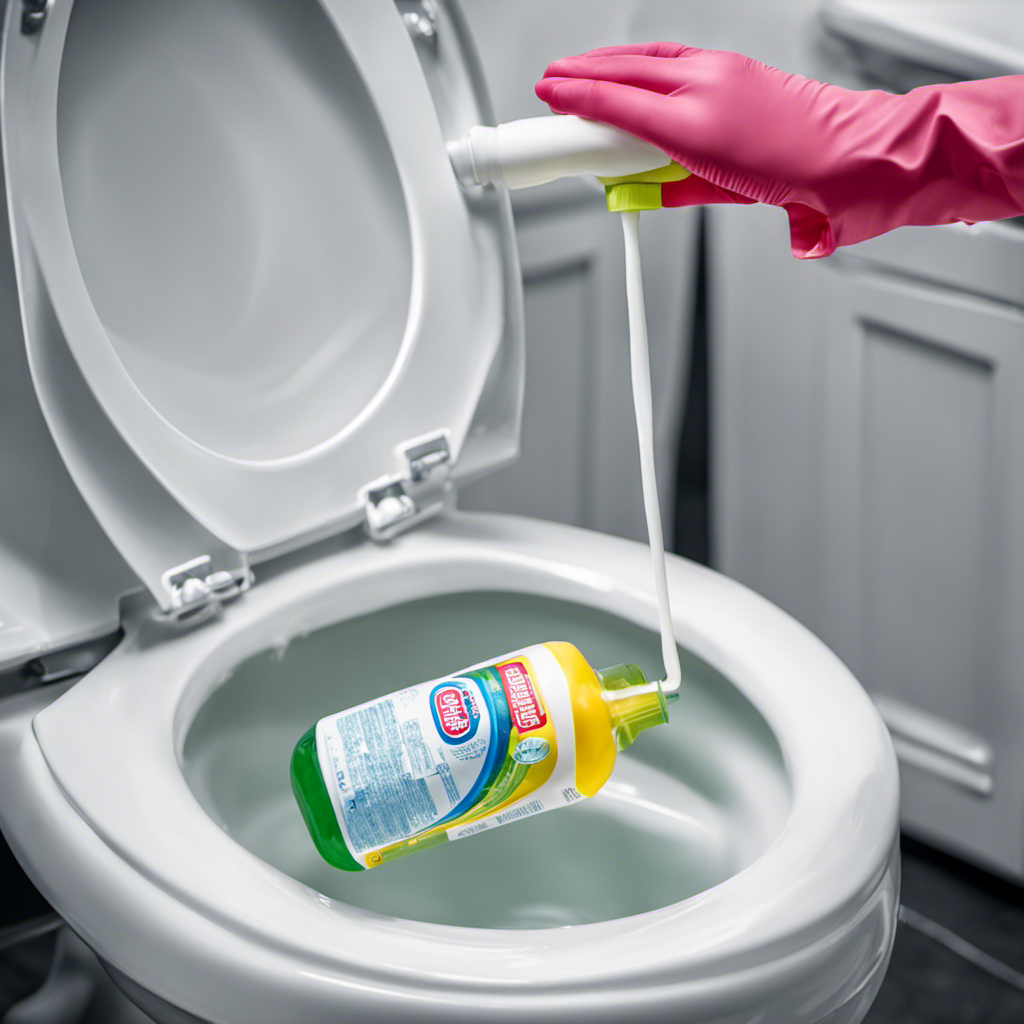Do you ever stop and think about the unsung hero in your home? The one that faithfully serves you day in and day out? Yes, I’m talking about your toilet. It may seem like a simple fixture, but it plays a vital role in your daily life.
So, how long should a toilet last? In this article, we will explore the factors that impact its lifespan, the signs that indicate it may need replacing, and how to extend its longevity through regular maintenance.
Get ready to dive deep into the world of toilets and discover the secrets to a long-lasting throne.
Key Takeaways
- The lifespan of a toilet can be influenced by factors such as the material of the toilet (porcelain vs. plastic), the quality of the water that flows through the toilet, and the durability and longevity of different materials.
- It is important to consider both the material and water quality when determining the lifespan of a toilet.
- Factors such as usage, maintenance, and material quality can affect the average lifespan of different types of toilets.
- Signs of wear and tear, such as leaks, cracks, and chips, should be considered when determining whether to upgrade or repair a toilet nearing the end of its lifespan.
Factors That Impact the Lifespan of a Toilet
When it comes to the lifespan of your toilet, there are several factors that can impact how long it lasts.
One of the primary factors is the material the toilet is made of. Different materials have varying levels of durability and longevity. For instance, toilets made from porcelain are known for their strength and durability, often lasting for many years. On the other hand, toilets made from cheaper materials like plastic may not withstand the test of time as well.
Another factor that can greatly affect the lifespan of your toilet is the quality of the water that flows through it. Hard water, which contains high levels of minerals, can cause mineral buildup and corrosion in the toilet’s components, leading to a shorter lifespan.
Therefore, it is important to consider both the material of the toilet and the quality of the water when determining how long your toilet will last.
Average Lifespan of Different Types of Toilets
When it comes to the lifespan of a toilet, there are several factors that come into play. Different types of toilets have varying lifespans, with some lasting longer than others. Factors such as usage, maintenance, and quality of materials can greatly affect how long a toilet will last.
When faced with a toilet that is nearing the end of its lifespan, you may be wondering whether it’s better to upgrade or repair.
Common Toilet Lifespans
You can typically expect a toilet to last around 10-15 years with regular maintenance and proper use. However, this lifespan can be influenced by various factors affecting durability.
Here are some common factors to consider:
- Quality of materials: A toilet made with high-quality materials is likely to last longer than one made with cheaper materials.
- Frequency of use: The more a toilet is used, the more wear and tear it will experience over time.
Signs of wear and tear to look out for include:
- Leaks: If you notice water pooling around the base of the toilet or hear a constant running sound, it may be a sign of a leak.
- Cracks or chips: Any visible damage to the porcelain or tank could indicate that the toilet is reaching the end of its lifespan.
Regular maintenance, such as cleaning, inspecting for leaks, and replacing parts when necessary, can help extend the life of your toilet.
Factors Affecting Toilet Lifespan
The lifespan of a toilet can be influenced by various factors such as the quality of materials used and the frequency of use. When it comes to factors affecting toilet efficiency, one key aspect is water quality.
Poor water quality, characterized by high mineral content or corrosive elements, can have a detrimental impact on the lifespan of your toilet. These impurities can cause mineral buildup, leading to clogs and reduced flushing efficiency over time. Additionally, corrosive elements can damage the internal components of the toilet, causing leaks and premature wear.
Regular maintenance, such as cleaning and descaling, can help mitigate the effects of poor water quality. However, if your toilet is constantly facing issues due to water quality, upgrading to a more durable and resistant model may be a better long-term solution.
Transitioning into the subsequent section, let’s explore the pros and cons of upgrading versus repairing your toilet.
Upgrading Vs. Repairing
One option worth considering is whether to upgrade your toilet or repair it.
When it comes to upgrading options, there are a few choices to consider:
- Dual-flush toilets: These toilets offer the option of using less water for liquid waste and more water for solid waste, resulting in water savings and potentially lower utility bills.
- Low-flow toilets: These toilets are designed to use less water per flush, reducing water consumption and promoting environmental sustainability.
On the other hand, repairing your toilet may be a more cost-effective option, especially if the damage is minor. Consider the following:
- Replacement parts: Depending on the issue, you may be able to replace specific components, such as the flush valve or fill valve, instead of replacing the entire toilet.
- DIY repairs: If you have some plumbing knowledge and skills, you may be able to tackle small repairs yourself, saving money on professional services.
When making a decision between upgrading or repairing your toilet, it’s essential to weigh the cost comparison and consider the long-term benefits of each option.
Signs That Indicate Your Toilet May Need Replacing
If your toilet is constantly running or leaking, it might be time to consider replacing it. While regular toilet maintenance can help prolong the lifespan of your toilet, there are certain signs that indicate it may be wearing out.
One of the most obvious signs is a persistent leak, which can lead to water damage and higher water bills. Another sign is frequent clogs, which could indicate a problem with the flushing mechanism or the pipes. Additionally, if you notice cracks in the porcelain or the tank, it’s a clear indication that your toilet is nearing the end of its lifespan.
Lastly, if your toilet is outdated and no longer meets your aesthetic preferences or efficiency standards, it may be time for an upgrade. Remember, regular maintenance can help extend the life of your toilet, but when the signs of wear become evident, replacing it is the best option.
How to Extend the Lifespan of Your Toilet
To extend the lifespan of your toilet, you’ll need to perform regular maintenance tasks. These include checking and replacing the flapper valve or adjusting the water level in the tank. These simple steps can help prevent potential issues and keep your toilet functioning efficiently for years to come.
Here are some additional tips to keep in mind:
-
Clean the toilet bowl regularly to prevent the buildup of hard water stains and mineral deposits. You can use a toilet bowl cleaner and a brush to scrub away any grime.
-
Inspect the toilet’s tank components, including the fill valve and flush valve, for any signs of wear or damage. Replace them if necessary to ensure proper functioning.
-
Avoid using harsh chemicals or abrasive cleaners that can damage the toilet’s surfaces. Stick to mild cleaners and non-abrasive scrub brushes.
-
Consider installing a water softener if you have hard water, as this can help reduce the buildup of minerals in your toilet.
Common Toilet Problems and Their Effect on Longevity
If you want to ensure the longevity of your toilet, it’s important to address common problems that can shorten its lifespan.
One significant issue is water leaks, as they can cause damage to the surrounding floor and the internal components of the toilet.
Another problem to watch out for is a poor flushing mechanism, which can lead to frequent clogs and potential damage to the toilet bowl and pipes.
Water Leaks Decrease Lifespan
Water leaks can significantly decrease a toilet’s lifespan. It’s important to address any leaks promptly to avoid further damage and ensure water conservation.
Here are two reasons why water leaks are detrimental to your toilet:
-
Increased water consumption: Leaks waste a significant amount of water, leading to higher utility bills and unnecessary strain on water resources. By fixing leaks, you contribute to water conservation efforts and reduce your ecological footprint.
-
Structural damage: Constant water leaks can cause damage to the toilet’s components, such as the flapper, fill valve, or seals. This can lead to further leaks, reduced flushing efficiency, and even potential flooding. Regular toilet maintenance, including checking for and repairing leaks, is essential to prolonging its lifespan and preventing costly repairs.
Addressing water leaks is just one aspect of toilet maintenance. Another common issue that can cause damage is a poor flushing mechanism. Let’s delve into this further.
Poor Flushing Mechanism Causes Damage
When your toilet has a poor flushing mechanism, it can result in clogs and inadequate waste removal. Proper toilet maintenance is essential to prevent these issues and ensure the longevity of your toilet.
One factor that can affect the flushing mechanism is the impact of hard water. Hard water contains minerals like calcium and magnesium, which can build up in the toilet’s flushing system over time. These mineral deposits can clog the flushing mechanism, making it difficult for water to flow through and flush waste properly.
Regular cleaning and descaling of your toilet can help prevent this buildup and maintain its flushing efficiency. By addressing the impact of hard water and maintaining the flushing mechanism, you can avoid frequent clogs that can shorten the lifespan of your toilet.
Frequent Clogs Shorten Lifespan
Frequent clogs can shorten the lifespan of your toilet, so it’s important to address this issue promptly. Neglecting toilet maintenance and failing to take preventive measures can lead to costly repairs or even the need for a complete replacement.
Here are a few key points to keep in mind:
-
Proper flushing technique:
-
Avoid flushing excessive amounts of toilet paper or other non-flushable items.
-
Teach children about responsible flushing habits.
-
Regular cleaning:
-
Use a toilet brush to remove any residue or buildup.
-
Consider using a toilet cleaner specifically designed to prevent clogs.
Importance of Regular Maintenance for Your Toilet’s Lifespan
Regular maintenance is crucial for extending the lifespan of your toilet. By implementing regular maintenance practices, you can ensure that your toilet functions properly and lasts for years to come. The benefits of regular maintenance are numerous, from preventing costly repairs to improving water efficiency. One important aspect of regular maintenance is scheduling professional inspections. These inspections can identify any potential issues before they become major problems, saving you time and money in the long run. A professional plumber can thoroughly inspect your toilet, checking for leaks, cracks, and other issues that may go unnoticed. This table illustrates the regular maintenance benefits and the importance of professional inspections:
| Regular Maintenance Benefits | Importance of Professional Inspections |
|---|---|
| Prevents costly repairs | Identifies potential issues |
| Improves water efficiency | Saves time and money |
| Extends the lifespan of toilet | Ensures thorough inspection |
With regular maintenance and professional inspections, you can maximize the lifespan of your toilet. However, there may come a time when it’s necessary to consider upgrading your toilet.
When It’s Time to Consider Upgrading Your Toilet
Now that you understand the importance of regular maintenance for your toilet’s lifespan, let’s discuss when it’s time to consider upgrading your toilet.
Over time, even with proper maintenance, toilets can begin to show signs of wear. Here are some key indicators that it might be time to think about upgrading:
- Constant clogging or poor flushing performance
- Frequent leaks or cracks in the toilet bowl or tank
- Outdated design or lack of water efficiency
- Difficulty finding replacement parts due to outdated models
When considering upgrading your toilet, you have several options to choose from:
-
Dual-flush toilets: These toilets offer a choice between a low-volume flush for liquid waste and a higher-volume flush for solid waste, reducing water consumption.
-
Water-saving toilets: These toilets are designed to use less water per flush, helping you save on your water bill and conserve water resources.
Conclusion
So, now you know how long a toilet should last and what factors can affect its lifespan. By following proper maintenance and addressing any issues promptly, you can extend the life of your toilet.
Remember to check for signs of wear and tear, such as cracks or leaks, and consider upgrading if your toilet is outdated or inefficient.
For example, let’s say you have a toilet that is over 20 years old and constantly requires repairs. By upgrading to a newer, more efficient model, you can save money on water bills and enjoy a worry-free bathroom experience.
